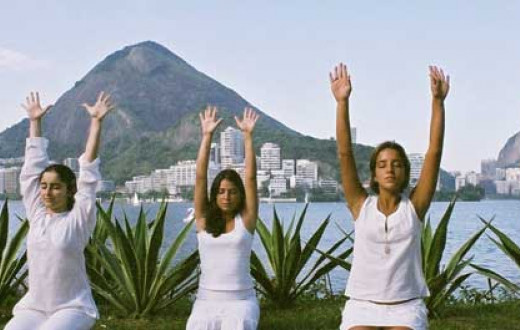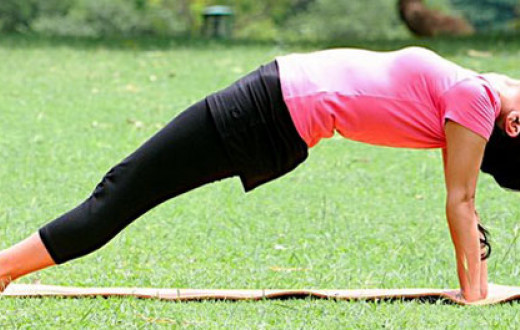What is Meditation?
Meditation is about getting a healthier sense of perspective and is the practice of training your mind in awareness, also known as mindfulness. It is not about being, creating a new person, or becoming a better or different person but about nourishing and providing clarity and peace of mind to benefit your body mind, and spirit. Meditation is not about judgment or turning off your thoughts and feelings but learning to understand them to overcome, manage and reduce stress, and grief and practice a healthier way of relaxing and being in the present moment, also known as mindfulness. Meditation is the practice of relaxing, becoming present at the moment, and to guides the way to mindfulness.
What is Mindfulness?
“Mindfulness is meditative awareness. When you are mindful, there is a sudden shift within you. From the scenery, you move towards the seer. It is taking your attention back to yourself. Art of Living founder, Gurudev Sri Sri Ravi Shankar "
Mindfulness is the ability to be present and fully engaged in the moment and to rest in the here and now. Mindfulness is not limited to meditation, but meditation is a great start to mindfulness training and is an important skill.
Is Meditation a Skill?
Meditation is a skill to exercise the mind . Practicing Meditation takes time and training and is similar to learning any new skill. Meditation exercises the mind and helps you learn how to fully utilize parts of the mind that you have never used before by experiencing and learning new skills to positively impact your health and happiness.
Preparation
Ancient disciplines of self-awareness believed, the more reverence you show for the practice, the more it rewards you with its secret gifts. While it is important to be regular with the discipline of meditating every day, it is equally valuable to create a space of deep reverence, comfort and freshness for your practice. You can personalize it with just the right lighting, essence and sacredness.
Does your environment affect the quality of your meditation?
Your environment can have a big impact on your experience, especially if you are a beginner. Making a place in your home just for meditation helps in many ways:
Your mind and body will associate that space with meditation
Serves as a visual reminder to meditate
It's easy to slide right into meditation
Choose a quiet place
The place you choose for your meditation practice is as important as your choice of a suitable time. Consider selecting a location that is quiet and peaceful, somewhere you feel comfortable. The stillness around you can help you find stillness within. Pick the quietest corner in the house and switch of any distraction.
Switch off your distractions
It’s time to switch off to switch on!
There is nothing more distracting than Facebook notifications, Instagram selfie updates and the chimes of modern technology threatening to ruin a peaceful, calm and purposeful meditation. As important as relationships are, during meditation it’s time to switch off and switch on! So put their phones on silent, unplug your home phone and take some time to yourself. The dog videos will be there after!
Should you meditate in the dark?
When you meditated the environment should not matter, to truly mediate you separate from your environment and all that is around you. With that said, it is important to create a calming, relaxed atmosphere to relax, calm, and meditated and it is down to personal preference. Some people choose to mediate in the dark and others in the light. Some find the calming and relaxing soft light from a lamp can help de-stress and create a space that you feel comfortable meditating in.
Chair or cushion?
As we discussed above, sitting upright and comfortably is key. If it’s easier for you, don't hesitate to sit in a chair or use a meditation cushion to meditate. It's one of the easiest ways to sit straight, still, and be comfortable.
Blanket or shawl?
The body temperature often drops when it gets into deep rest. So, beginning with a blanket or shawl can be a good idea. Also, if you're going to meditate outside, a light blanket or shawl can protect you from the wind or bugs. Either of which can pull the mind into activity.
Meditation music or silence?
If you are new to meditation and using guided meditation, music is fine. But once you are a pro and have established yourself in your meditation practice, you may not need any music. Here is what our experts share about the pros and cons of using music while meditating
Dress for the occasion
A few minutes of exercise and yoga can help prepare both body and mind for meditation. The movement of yoga can help settle the body, inertia and physical restlessness. It can also help quieten the mind and mental restlessness.
Establishing a routine
Meditation- Modern lifestyle, Modern Meditation Schedule
When is the best time to Meditate?
The time you choose to meditate varies from each person. Realistically, the modern world with all its tasks, schedules, and appointments requires a balance that suits your lifestyle and life. Most people choose to meditate in the morning, rested for the day. Others prefer at night ready for sleep and relaxation. A modern lifestyle requires a modern meditation schedule
This is YOUR journey; therefore, you need to find what works for you. There is no correct answer, there is no perfect time, and you do what is right for you.
Rise with Sunrise
Many meditators find Sunrise an effective time to meditate. If you are an early rise this time may suit you perfectly, to start your day off and set the tone for the rest of your day. At Sunrise, the outside world is quiet which is perfect to quiet the mind and a great time for reflection.
A quiet time to relax and be present
Choose and reserve a time that suits your household and schedule. If you know there is a particular time when the kids have gone to school, you have some time to yourself, or that you know that the house is quiet, then use that time to meditate. Meditation is your time to relax and be present with yourself, a time away from distractions, disruptions and the outside world.
Try to create a schedule and meditate at the same time every day.
A daily routine helps consequence any hindrances, start finding preferences and eliminates any questions on if you have time or what time is best. At first, try out different times, note down what works for you and then STICK TO IT. Or try at least.
There is a great power in habits, it allows for you to schedule, to plan and to reserve a time for you to allow yourself to focus on you.
Duration
How long should you meditate?
This depends on your preferences, life circumstances, and the time available. You can begin with 5-10 minutes and then gradually build up to 20 minutes or even longer (not required). As a general guideline, 20 minutes is an ideal length of time to meditate.
Should I Meditate on a full or empty stomach?
To have the best experience, it is helpful to have a light stomach. Meditation works best before meals or at least two hours after having eaten. When the stomach is full, you may become drowsy or even get distracted by indigestion. Meditation slows down metabolism. That is another reason why it’s more effective to meditate on a light stomach.
On the other hand, it’s hard to meditate when you feel very hungry. You may find that the only thing on your mind is the prospect of food! Needless to say, this does not enhance meditation either. If you are super hungry, a small piece of fruit can tide you over and still let you meditate comfortably. Learn the art of mindful eating to keep your body and mind happy.
No matter which time you choose or if you choose a light or dark space, meditation and your ritual is unique, and therefore experimenting and finding what space works for you, including lighting is an important step to mindfulness practice and creating a space that supports your health and wellbeing. Your daily routine will start to fit around your meditation practice. Your meditation practice will start to fit around you daily routine.
During Meditation
Meditation is a form of conscious relaxation where the mind is alert, yet relaxed. When lying down the mind has a tendency to fall asleep and may cause you to lose your alertness.
Standing or walking, will cause the mind to stay active and not relax.
How to sit ?
Sit straight and comfortably without feeling rigid
Sit still as much as possible.
Use chairs, meditation cushions, and pillows to help you find a relaxed, upright posture
Keep your palms open and rest them on your knees to help the free flow of life force energy.
Close your eyes, to open your mind
The best way to meditate is with your eyes closed
As the eyes are one of your five sense organs, we suggest keeping your eyes closed to heighten your other senses.
When the eyes are open you remaining connected to your surroundings, letting the outside world and thoughts remain and are keeping your mind active, therefore it cannot fully relax. Closing your eyes will help quieten the mind and prevent the outside problems hindering your journey inwards, allowing you to bring your attention within and fully rest.
This takes practice, and often closing your eyes can cause your mind to race, therefore focusing on an object and keeping your mind still, then closing your eyes gradually will help gradually close the flow from state of alertness to state of rest.
Meditation: Let it go, let it go
Meditation in its truest sense is a about letting go and a state of pure consciousness. Although some breathing techniques, require a degree of focus and a gentle awareness of breath can be a great aid to meditation by concentrating on your breathing, you are keeping your mind active and therefore it cannot fully relax.
Therefore one breath-based meditation called the SKY Breath Meditation technique uses rhythms of the breath to help you
open the door to calm and clarity and go into a state of meditation.
To focus on breathing or not to focus on breathing- that is the question!
Although, at first you may focus on breathing, this is an art that is perfected and practiced over time and will become second nature to you the more you meditate.
Let there be light…and even breath
During meditation allow your breath to get lighter and smoother. Breathing exercise like alternate nostril breathing and a light and even breath can help quiet the mind as breathing is connected to your mind. Alternate nosing breathing allows you breath to naturally become lighter and smoother,
One powerful tip for deep meditation is allowing your breath to get lighter and smoother. Since the breath is so connected to your mind, a light and even breath can help to bring the mind to an ever-quieter place. With breathing exercises like alternate nostril breathing, your breath naturally becomes smoother and lighter. As the meditation continues your breath will slow down and bring the mind to an ever-quieter place on its own.
All the spaces in between- let it sink in
Observe the Thoughts
Accept, Do Not Resist
Meditation is not Concentration
Know that meditation is not about concentration. It is in fact de-concentration. For those 15 minutes, set aside all your obligations and planning.
Drop the Baggage of Identities and Ambitions
Before settling in, tell yourself that for these the next 15 or 20 exclusive minutes, ‘I am nothing, I do nothing, and I want nothing’. This initial dharana or concept acts like a vehicle to take you into a stable meditative state.
Ending the Meditation
All good things must come to an end
Don’t rush it!
End your meditation gently and without any rush. As you come to the end of the meditation, try not to be in a hurry to open your eyes or to move around. Simply remain present in the stillness that you have cultivated. Take a few moments to soak in this and feel grateful. Then when you are ready, gradually become aware of your body and your surroundings. Finally allow your eyes to slowly open.
The Aftermath
Take it day by day
As you open your eyes, it’s best not to judge your meditation. Meditation is a lifelong journey. Take it session by session, day by day. And don’t expect instant zen. Meditation is a skill that grows with patience and practice. You will experience some benefits with each session. And you may start noticing even bigger changes gradually over a period of time. There is no “good” or “bad” meditation. There is no “success” or “failure”. Rather than analysing your experiences, stay more connected with yourself and the benefits that follow.
Stick to your technique and schedule
Once you decide on a meditation technique and schedule that you think has started working for you, stick to it. It is best not to juggle between or mix different meditation techniques or schedules. If the schedule or technique has worked for you, you will start noticing some subtle but definite differences. And so may the people around you!
Learn from a qualified teacher
With so many meditation techniques to choose from, it is easy for anyone to get lost. Like trying to learn how to swim, trying to learn meditation from a book, or even on YouTube is quite limiting and doesn’t give you a chance to ask questions or get confirmation or guidance, which is so helpful on the meditation journey. Learning in-person or online from a certified instructor gives you a chance to ask questions, clarify key points, and even get feedback on your practice. The Art of living Australia provides online Meditation and yoga classes in Sydney, Melbourne, Brisbane, Canberra, Perth. Changing millions of life world-wide through meditation and yoga.
Get a personalized mantra
I have had many peaceful times with guided meditations. But it is nothing like the stillness and depth of peace I experience when I use a mantra.
What is a mantra?
It is a subtle sound, a vibration that takes you inward. But it's not just any sound, and it's not just saying it in any old way. There is a delicate art of using a mantra to slip into silence.
Meditate in a group
The mind is a field that extends beyond the body. Have you ever been with someone who is so bright and happy that you can’t help but be happy too? Even if they don't say anything, you can feel it, right?
In a similar way, when you sit for meditation with a group of people, the collective energy can help you have a deeper, calmer experience. And you may also meet some wonderful people!



























